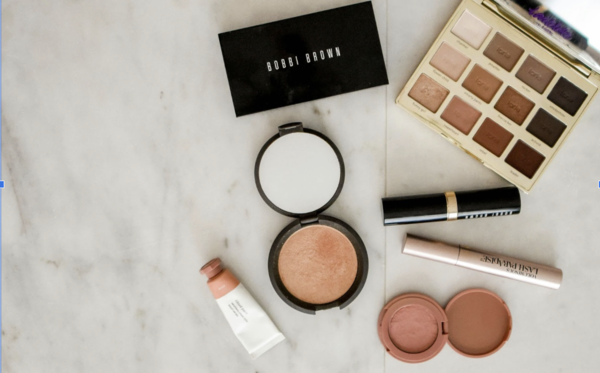
In the bustling and highly competitive world of cosmetics, intellectual property (IP) plays a pivotal role in defining and protecting brand identity. Beauty brands face unique challenges in acquiring, safeguarding, and monetizing their trademarks. From the shape of a bottle to the subtle nuances of product names, establishing a strong IP strategy is essential for navigating a crowded marketplace, preventing counterfeiting, and collaborating with influencers or other brands. This article delves into the various aspects of IP in the beauty industry and the strategies brands can adopt to thrive.
Building a Strong Brand Foundation
Creating a recognizable and reputable beauty brand starts with establishing a robust IP foundation. This includes conducting thorough clearance searches to ensure that product names, logos, and slogans are available for use and registration. Companies must be diligent in researching existing trademarks and assessing potential conflicts, especially in global markets where different laws and regulations apply.
Global Clearance Challenges:
The beauty industry is international, with brands often launching products across multiple countries. This presents complexities in IP protection as different jurisdictions have varying laws regarding trademark registration and protection. Companies must navigate these challenges through effective legal strategies and by seeking local expertise to ensure global clearance and compliance.
Safeguarding Product Names and Trade Dress
The name of a product can make or break its success, underscoring the importance of trademark protection. But it’s not just about the name; the overall impression that packaging imparts—known as "trade dress"—is equally critical. Many iconic brands rely on specific colors, shapes, and design elements that are integral to their identity.
Protecting Against Infringement:
To safeguard product names and trade dress, beauty brands should seek federal trademark registration, providing them with legal recourse in case of infringement. Monitoring the marketplace for unauthorized use, particularly online where counterfeiting is rampant, is crucial. By employing proactive measures such as monitoring services and brand enforcement strategies, companies can defend against imitators that threaten their reputation.
Leveraging Licensing and Co-Branding Agreements
Collaborating with influencers or entering into co-branding agreements can enhance brand visibility and reach. However, these partnerships carry unique risks related to maintaining trademark integrity and quality control.
Quality Control in Collaborations:
When entering licensing agreements, it is vital for brands to establish strict guidelines governing how their trademarks are used, ensuring that the quality of products remains consistent. Clear contractual terms that define the scope of use for trademarks, images, and logos can help mitigate potential issues related to dilution or damage to brand reputation.
Adapting to Sustainability Trends and AI Tools
The beauty industry is increasingly shifting toward sustainable practices and products. As eco-conscious consumers demand transparency and responsibility, brands must adapt their IP strategies accordingly.
Harnessing AI for Brand Protection:
Artificial intelligence (AI) tools can assist in monitoring online marketplaces for counterfeits and unauthorized use of trademarks, offering brands an efficient way to protect their intellectual property. AI can also aid in analyzing consumer sentiment and trends, providing insights to help brands stay ahead of competitors.
Anticipating Future Shifts in the Cosmetics Industry
The beauty market is ever-evolving, with new trends, technologies, and consumer preferences emerging rapidly. Brands must remain agile and be prepared for shifts in the industry to address evolving IP demands.
Keeping Pace with Changes:
Staying updated with regulatory changes and industry standards, particularly in relation to product safety and environmental claims, is essential. Engaging in continuous market research and fostering an innovative culture can help brands anticipate shifts and adjust their IP strategies accordingly.
Conclusion
In the cosmetics industry, intellectual property is not just a legal safeguard; it is a crucial element of brand identity and market success. By effectively managing trademarks and trade dress, navigating global challenges, and embracing collaboration, beauty brands can protect their unique offerings and maintain a competitive edge. As the cosmetics landscape continues to change, proactive and informed approaches to intellectual property will be essential for brand growth and integrity. The beauty of a successful brand truly lies in the eyes of its IP holder.
Thanks for Reading!
We appreciate you taking the time to explore our insights at Sandman Law Office, PLLC. As a trusted partner in Daytona Beach, we’re passionate about serving businesses, innovators, entrepreneurs, and creatives. Our focus areas include intellectual property, business law, and alternative dispute resolution, designed to empower you in your legal journey.
We invite you to join the conversation! Share your thoughts or questions in the comments section below. You can also connect with us on social media for more updates and insights—follow us on LinkedIn at Lori Sandman, like our Facebook page at Sandman Law Office, and find us on Instagram @lorisandman.
Your opinions matter to us, and we look forward to your engagement! If you’re in need of legal guidance or want to protect your ideas, don't hesitate to reach out. Together, we can navigate the legal landscape for your success!